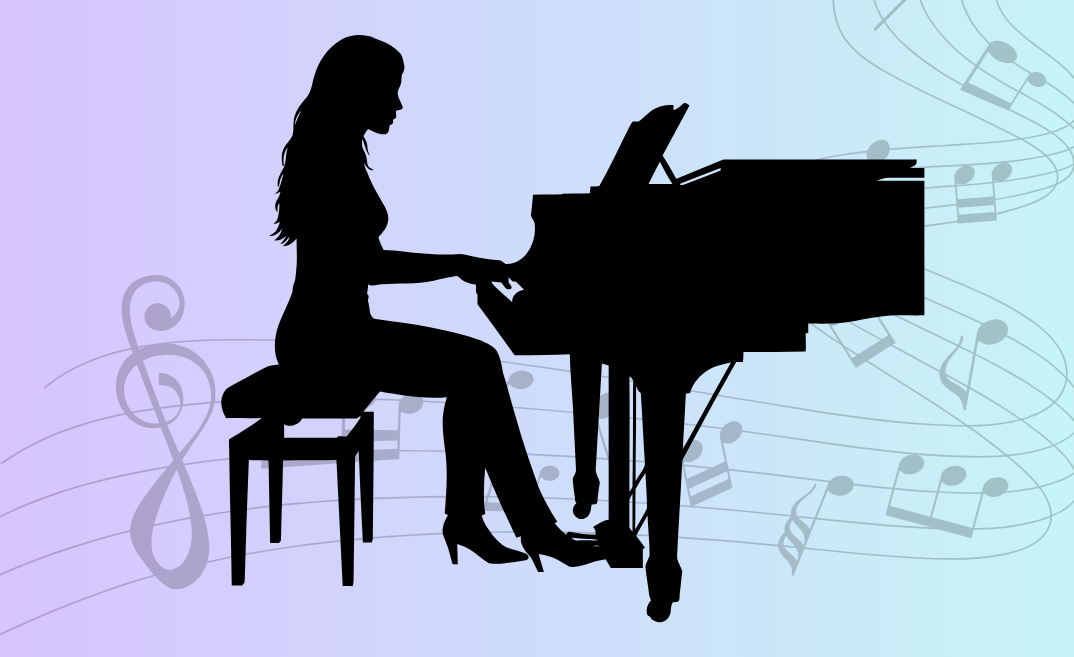Blog
Piano Posture & Preparation: Building Technique Before You Play a Single Note

Before you press a single key, there’s one thing every great pianist has mastered: piano posture & preparation. This often-overlooked foundation can mean the difference between progress and plateaus, ease and tension, confidence and discomfort.
Whether you’re a beginner or brushing up your form after years of playing, refining your piano posture & preparation sets you up for success.
Why Piano Posture & Preparation Matters
Think of piano playing like any physical activity—it demands precision, balance, and awareness. Poor posture leads to tension, fatigue, and even long-term injury. But when your setup is right, your technique, expression, and stamina all benefit.
Solid piano posture & preparation helps you:
- Build better muscle memory
- Prevent hand, wrist, and back pain
- Improve control, speed, and accuracy
- Create a more professional and confident stage presence
Hand Position and Posture: A Head-to-Toe Setup
Your body is your instrument as much as the piano itself. Good hand position and posture are fundamental parts of proper piano technique.
Here’s how to set yourself up:
- Feet flat on the floor – Stable and grounded, not dangling or crossed.
- Knees slightly under the keyboard – You should be able to reach the pedals comfortably.
- Back straight but relaxed – Avoid slouching or over-arching.
- Shoulders relaxed – No tension or shrugging.
- Arms extended naturally – Elbows should hover slightly above or in line with the keys.
- Wrists level – Neither collapsed nor raised; keep them flexible.
- Fingers curved – Like holding a small ball, not flat or rigid.
This alignment ensures a strong foundation for all movements and is essential to excellent piano posture & preparation.
Tabletop Exercises and Other Pre-Playing Warmups
Before touching the keys, warming up away from the instrument can enhance your body awareness and build good habits.
Try these tabletop exercises:
- Finger Taps – Place your fingers on a flat surface and tap one at a time, focusing on independence and control.
- Wrist Circles – Rotate your wrists slowly in both directions to loosen tension.
- Knuckle Rolls – Gently roll through each finger joint for flexibility.
- Silent Scales – Pretend to play scales on the table with proper finger numbers and curved fingers.
These tabletop warmups are simple but powerful tools for reinforcing the physical side of piano posture & preparation—even away from the bench.
Understanding Tension and Release at the Piano
One of the most subtle—and critical—aspects of piano posture & preparation is learning to feel tension and release in your body.
Too much tension limits movement and expression. Too little control makes playing sloppy or weak.
Pay attention to:
- Breath – Are you holding it?
- Fingers – Are they pressing harder than necessary?
- Shoulders – Are they creeping upward with effort?
- Wrists – Are they locked or overly limp?
Aim for controlled relaxation—you want stability without rigidity. Practice releasing tension between phrases or during long rests to build awareness.
Bench Height and Distance: Your Setup Matters
Where and how you sit can make or break your form.
- Height: Your forearms should be parallel to the ground when your fingers rest on the keys.
- Distance: Sit far enough back that your elbows stay slightly forward of your torso when playing.
Small adjustments here make a big difference in your overall piano posture & preparation, especially during extended practice sessions.
Exercises That Facilitate Good Practice Habits
Just like athletes train fundamentals, pianists should incorporate exercises that reinforce posture, coordination, and finger control.
Here are a few exercises that align with solid piano posture & preparation:
- 5-finger scales – Play slowly and evenly while monitoring hand shape and tension.
- Hanon exercises – Great for strength, provided posture and wrist movement remain relaxed.
- Slow arpeggios – Focus on fluid motion and controlled transitions between notes.
- Silent rehearsing – Close your eyes and move through motions without sound to fine-tune posture and movement.
Practicing mindfully—even for just 10–15 minutes—builds a habit of awareness that accelerates growth.
The Pre-Playing Ritual: Preparing Mind and Body
Your preparation doesn’t stop at posture—it includes mental and physical readiness.
Here’s a pre-playing checklist that supports excellent piano posture & preparation:
- Take a deep breath – Settle into your body and the moment.
- Do a quick body scan – Check for tension in your neck, back, shoulders, and hands.
- Stretch your wrists and fingers – Simple circles, finger taps, or wrist rolls.
- Visualize your playing – Picture the piece or exercise with ease and clarity.
Creating this habit helps reinforce awareness, calm nerves, and ease you into focused practice.
Final Thoughts: Build Better Technique Before You Even Begin
If you take just five extra minutes at the start of each session to check in on your piano posture & preparation, you’ll see long-term gains in every area of your playing.
Before you play a single note, you already have the chance to become a better musician—just by the way you sit, breathe, and prepare. Prioritizing piano posture & preparation today leads to healthier technique, faster progress, and more joyful playing tomorrow.

